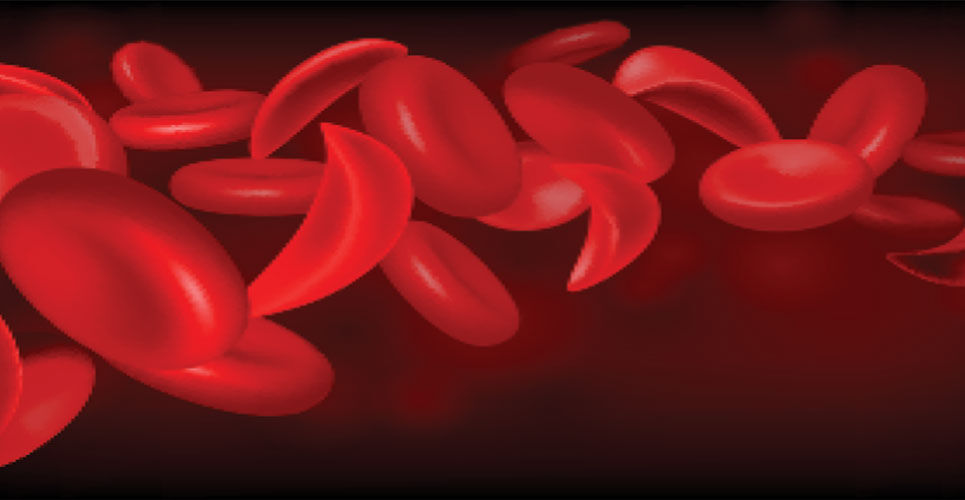The use of a stem cell gene therapy in sickle cell disease may offer a promising, curative treatment, according to a new study published in the New England Journal of Medicine.
Using OTQ923 – a clustered regularly interspaced short palindromic repeats (CRISPR)-Cas9-edited CD34+ cell product – researchers have been able to cause targeted disruption of the HBG1 and HBG2 (γ-globin) gene promoters, thereby increasing foetal haemoglobin expression in red-cell progeny in patients with sickle cell disease.
The condition results from a single amino acid substitution in the gene encoding the β-globin subunit and polymerisation of deoxygenated sickle haemoglobin, resulting in reduced deformability of red blood cells. Although elevated foetal haemoglobin levels in cells protect against the complications of sickle cell disease, during infancy, γ-globin gene transcription switches to β-globin. The overall effect of this transcriptional switch is a move away from production of foetal haemoglobin to adult haemoglobin within red blood cells.
An important question, is therefore whether it would be possible to reactivate expression of γ-globin and thus increase production of foetal haemoglobin, resulting in a clinical improvement in disease severity.
Sickle cell disease and CRISPR-Cas9 editing
For the study, researchers used CRISPR-Cas9 to edit specific genes in stem cells taken from each patient. These edits led to an increased cellular production of foetal haemoglobin, which was able to replace the unhealthy adult sickled haemoglobin and protect against the complications of sickle cell disease.
A total of three participants with severe sickle cell disease received autologous OTQ923 after myeloablative conditioning and were followed for six to 18 months. At the end of the follow-up period, all the participants had stable induction of foetal haemoglobin, which was broadly distributed in red cells.
As a consequence of greater foetal haemoglobin, the occurrence of vaso-occlusive crises decreased without any detected off-target effects.
Senior author of the study, James LaBelle, director of the Pediatric Stem Cell and Cellular Therapy Program at UChicago Medicine and Comer Children’s Hospital, said: ‘The biggest take-home message is that there are now more potentially curative therapies for sickle cell disease than ever before that lie outside of using someone else’s stem cells, which can bring a host of other complications.‘
‘Especially in the last 10 years, we’ve learned about what to do and what not to do when treating these patients. There’s been a great deal of effort towards offering patients different types of transplants with decreased toxicities, and now gene therapy rounds out the set of available treatments, so every patient with sickle cell disease can get some sort of curative therapy, if needed.‘

